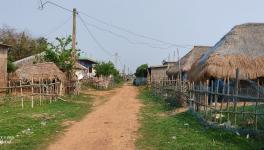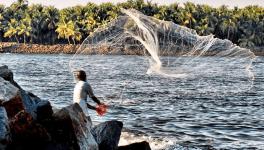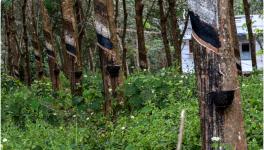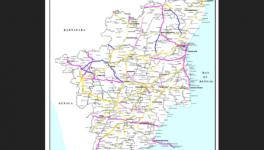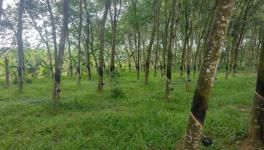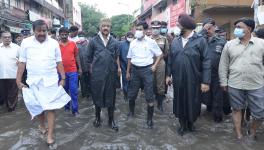Kanyakumari Fishing Hamlet Submerged Under Sand as Anti-Sea Erosion Measures Fail
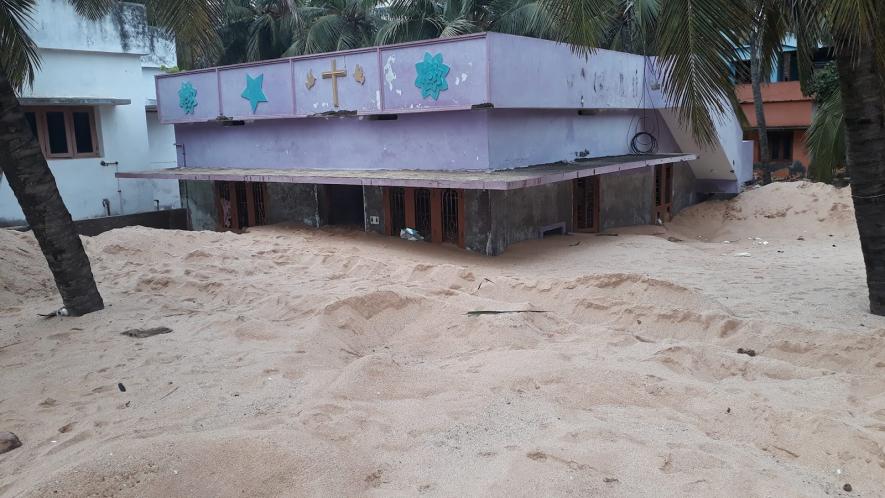
A house submerged almost half in sand owing to high tides and strong winds. (Image courtesy: Dr Vareethiah Konstantine).
Sea erosion in coastal villages of the Kanyakumari district has become a nightmare for fishermen. The damage faced by the residents of Azhikkal village has been unprecedented after only one night of strong winds and high tides deposited tonnes of sand in around 100 houses, forcing the residents to flee. The affected fishermen have demanded compensation for their damaged houses and the loss of livelihood.
According to experts, the construction of an artificial breakwater structure in the nearby fishing harbour and the unscientific installation of anti-sea erosion walls with insufficient height are the reasons for the massive intrusion of seawater. They have suggested a detailed study on the intrusion of tides on the meeting point of the vertical grounds and anti-sea erosion walls.
Rough seas are quite common on the western coast of Kanyakumari, which lies in the southern peninsula. Several fishing hamlets, including Azhikkal, along the west coast in Kanyakumari are in low-lying areas.
“Though seawater intrusion and erosion is common, one night of turbulent waters has deposited hundreds of tonnes of sand on several houses in Azhikkal village for the first time,” Vareethiah Konstantine, an expert in ocean ecology who has written extensively on issues faced by fishermen, told Newsclick.
Azhikkal was battered by severe winds and tidal waves from July 1 to 2, forcing hundreds of residents to flee their homes.
“Despite anti-sea erosion walls and groynes, seawater has entered several parts of the villages submerging houses under the sand. The houses remained under water for several hours,” Konstantine said.
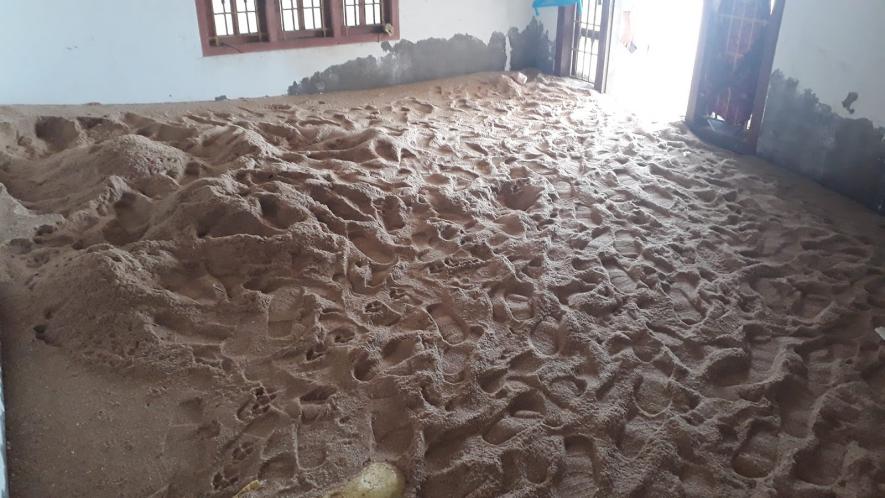
A room of one of the houses inundated with sand. (Image courtesy: Dr Vareethiah Konstantine).
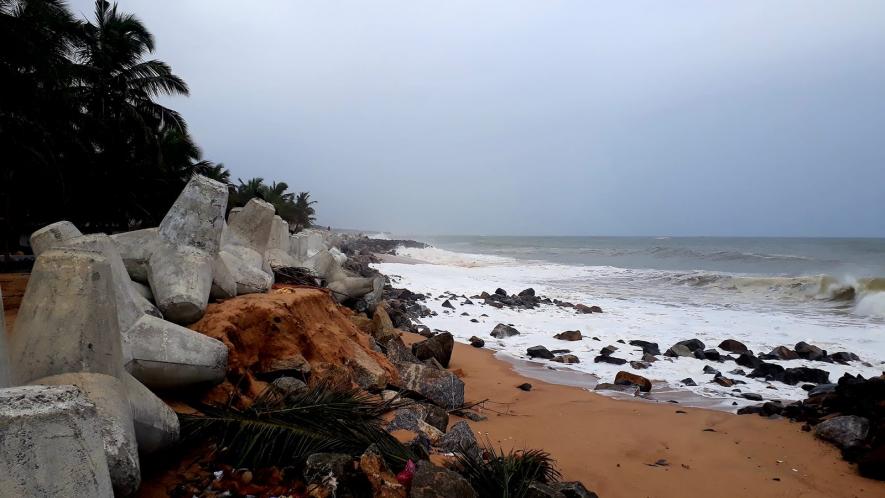
Vertical grounds damaged as waves break ahead of the groynes (Image courtesy: Dr Vareethiah Konstantine)
The affected residents have been put up in temporary shelters and may return to the village pretty soon but they are set to face similar dangers in the future. Several villages in Kanyakumari face a similar fate as the gap between the hamlets and the seashore is continuously reducing.
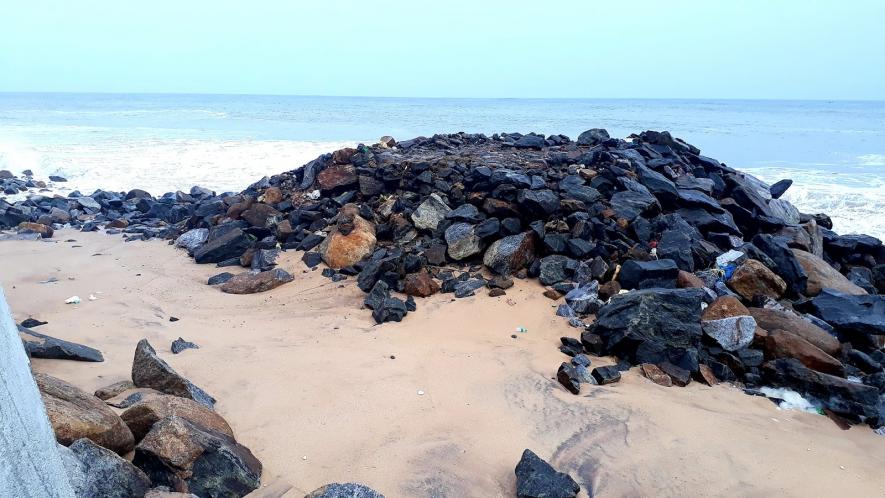
One of the shattered groynes along the coast of Azhikkal village. (Image courtesy: Dr Vareethiah Konstantine).
ARTIFICIAL CONSTRUCTIONS LEAD TO MASSIVE IMPACT
The unprecedented erosion has exposed the futility of precautionary measures. The construction of artificial structures for the fishing harbour in Muttom also has played a role in the changing ocean currents.
“Azhikkal, Pillaithoppu and Melathurai are low-lying interconnected villages. There is very little space between the villages and the seashore, which was not the case until a few years ago,” Konstantine said.
The establishment of the private Jeppiaar Fishing Harbour has been cited as a reason for the changing patterns. “Once the Muttom ridge protected the villages. But after the construction of the harbour and the western breakwater structure, it has become a threat,” Konstantine added.
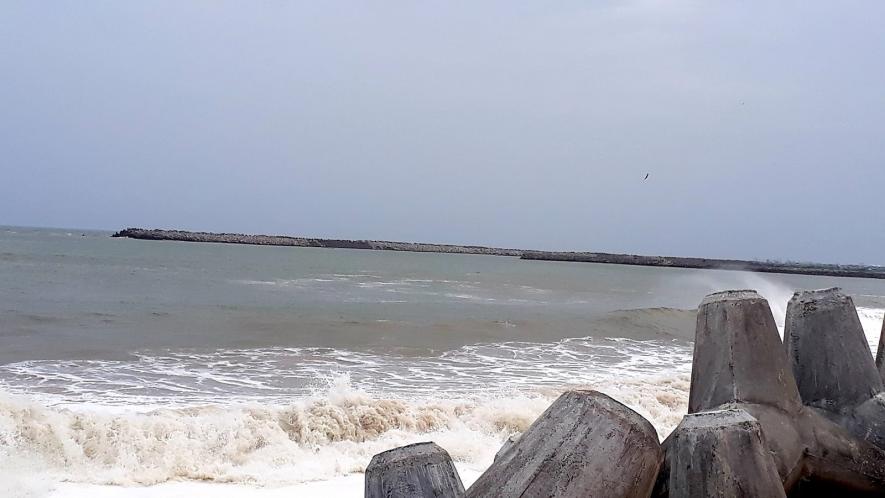
The western breakwater constructed for the Jeppiar fishing harbour. (Image courtesy: Dr Vareethiah Konstantine).
“The breakwater is a long projection inside the sea to protect the harbour area from tides. The construction has changed the ocean current, leading to a huge impact on the villages. A scientific approach is needed to find a solution since the western backwater is the reason for the present situation,” Konstantine said.
The insufficient height of the anti-sea erosion wall and improper laying of the wall with 18-metre width are the other reasons. “A detailed study of the reasons by experts, not temporary solutions offered by the government, is essential. Had there been an efficient system in place, the situation would not have arisen,” he said.
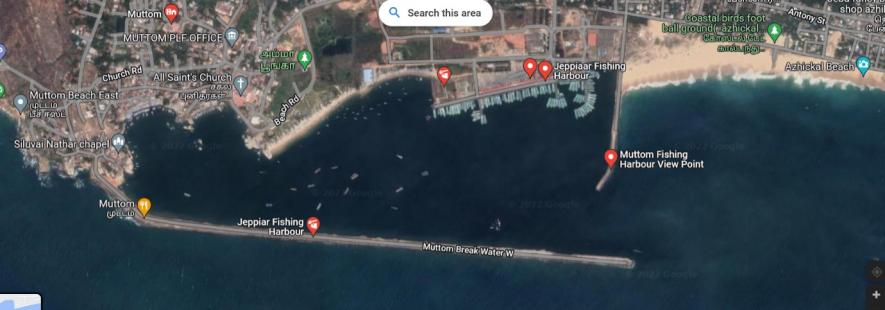
The western backwater structure in the sea, cited as the reason for the change in ocean current (the affected Azhikkal village is on the right end) (Screenshot from Google Maps of the Jeppiar fishing harbour and the neighbouring fishing hamlets).
Since the construction of the fishing harbour, residents of the hamlets have lost their direct contact with the sea and depend on it for their living. “The fishing community is yet to understand the negative impact of the harbour. The government is also responsible for the situation as no proper environmental and socioeconomic study was done prior to the construction of the harbour,” Konstantine said.
Efforts to remove the deposited sand in the village have failed as high tides continue with the advancing monsoon.
Get the latest reports & analysis with people's perspective on Protests, movements & deep analytical videos, discussions of the current affairs in your Telegram app. Subscribe to NewsClick's Telegram channel & get Real-Time updates on stories, as they get published on our website.











